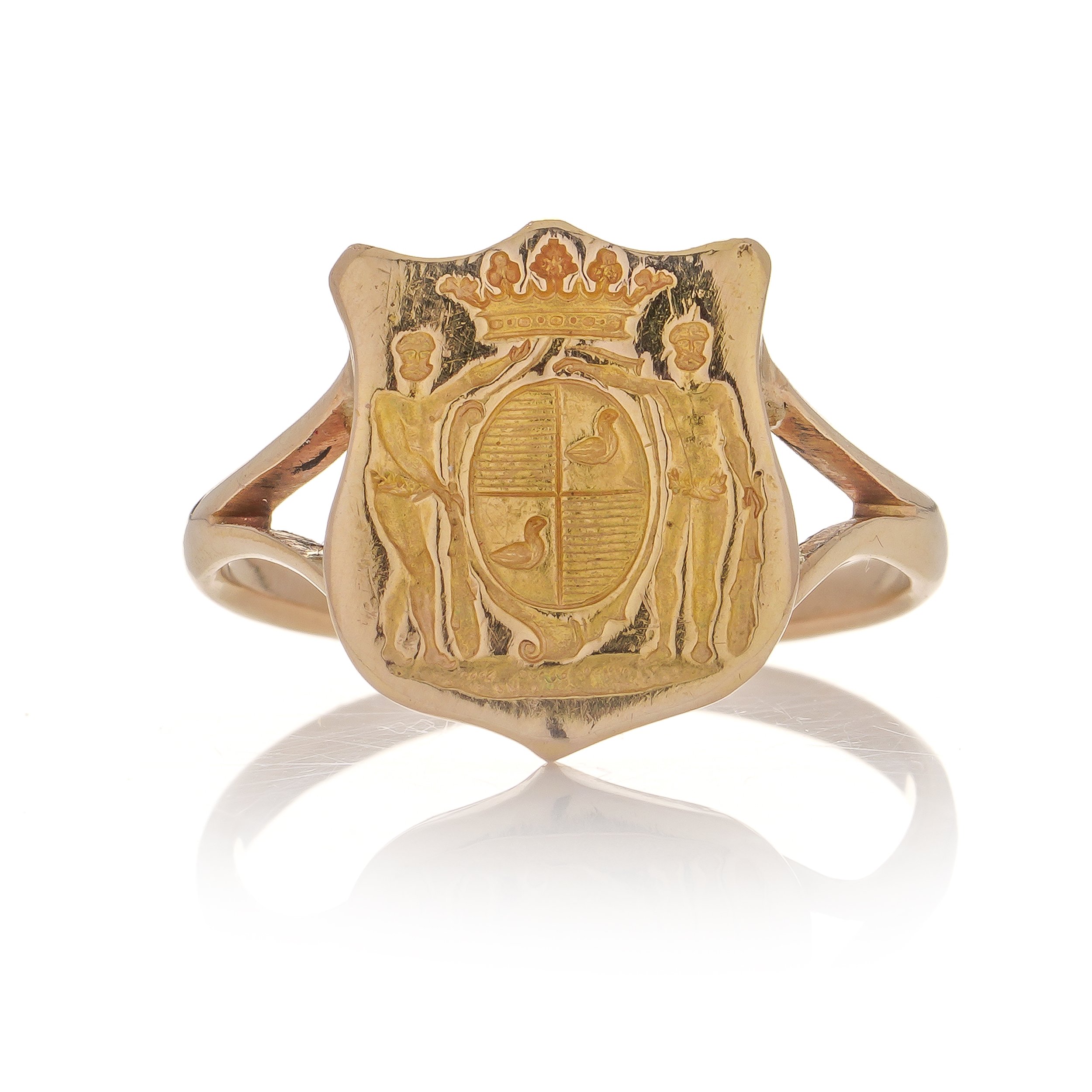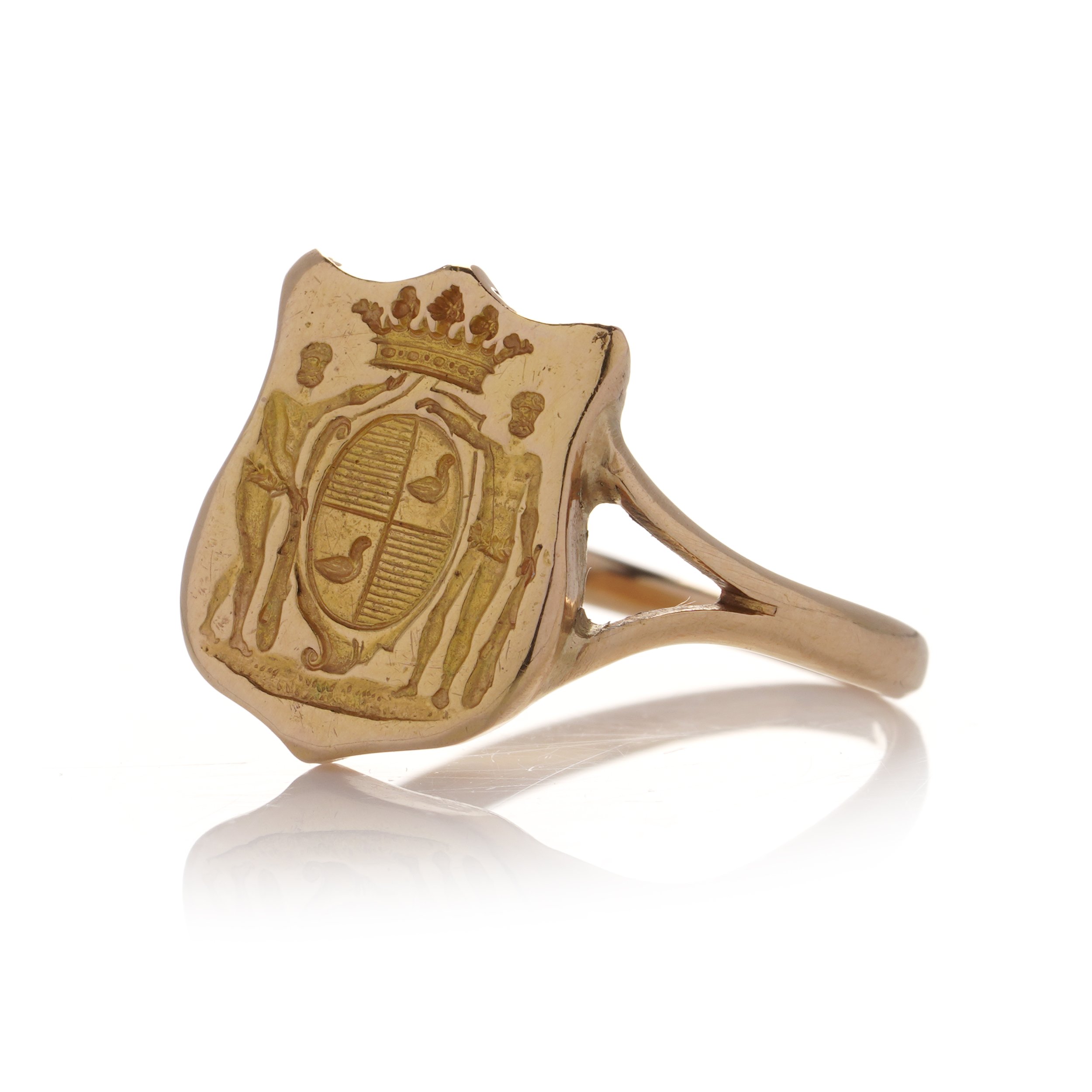-
Antique 20th Century 21 kt. gold Danish Royal Coat of Arms signet ring.
Made in the early 20th century. Tested positive for 21kt. gold.
Dimensions -
Finger Size (UK) = L (EU) = 51 1/2 (US) = 6
Ring size: 2 x 1.7 x 1.2 cmWeight: 4.50 grams
Condition: The ring is pre-owned, has minor signs of usage, good and pleasant condition overall.
-
The rich history and symbolism of heraldry are on full display in the Royal Coats of Arms of Denmark.
The Supporters, figures, or objects placed on either side of the Shield, are prime examples of this.
In the Danish Coat of Arms, the Supporters are two "wildmen of the woods," also known as vildmænd. These figures can be traced back to the early reign of the Oldenburg Dynasty, and are depicted as bearded, naked apart from oak leaves about the loins and temples, and carrying wooden clubs in the outside hand.
Heraldry as we know it today began to take shape in the 15th century. The Oldenburg Dynasty rose to prominence during this time, with Count Christian I of Oldenburg being elected as King of Denmark, Norway and Sweden in the mid-15th century. King Christian I used a total of four Seals during his reign, one replacing the other. The Sigillum secretum, shown above, was the first, only used in 1449. The Shield represents his titles as King of Denmark (1st Quarter), King of the Goths (3rd Quarter), and King of the Wends (4th Quarter). The second Quarter represents Oldenburg.
The drawing of the Seal dates back to around 1882 and is illustrated by Professor Julius Magnus Petersen. The image comes from page 9 of Henry Petersen's book Et dansk Flag fra Unionstiden i Maria-Kirken i Lübeck, published in Copenhagen by C. A. Reitzel, 1882. This is the first known representation of the vildmænd who are shown 'supporting' the Shield from behind.
The House of Oldenburg has occupied the Danish Throne ever since, and merged with the House of Glücksburg when Prince Christian of Schleswig-Holstein-Sonderburg-Glücksburg, the fourth son of Duke Friedrich of Glücksburg, was recognized in the London Protocol of 1852 as successor to the childless King Frederick VII of Denmark, a cousin of Christian's mother. The Supporters were retained. Interestingly, the former Monarchy of Greece, the Hellenes, has the same Supporters because Prince Vilhelm (William), Christian's second son, was elected King of the Hellenes on 30th March 1863, succeeding the ousted Wittelsbach Otto of Greece and reigning under the name George I. This just goes to show how deep the roots of heraldry run and how it can connect different branches of the same family.








